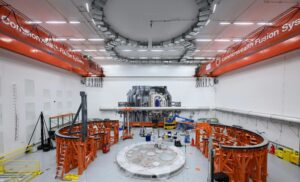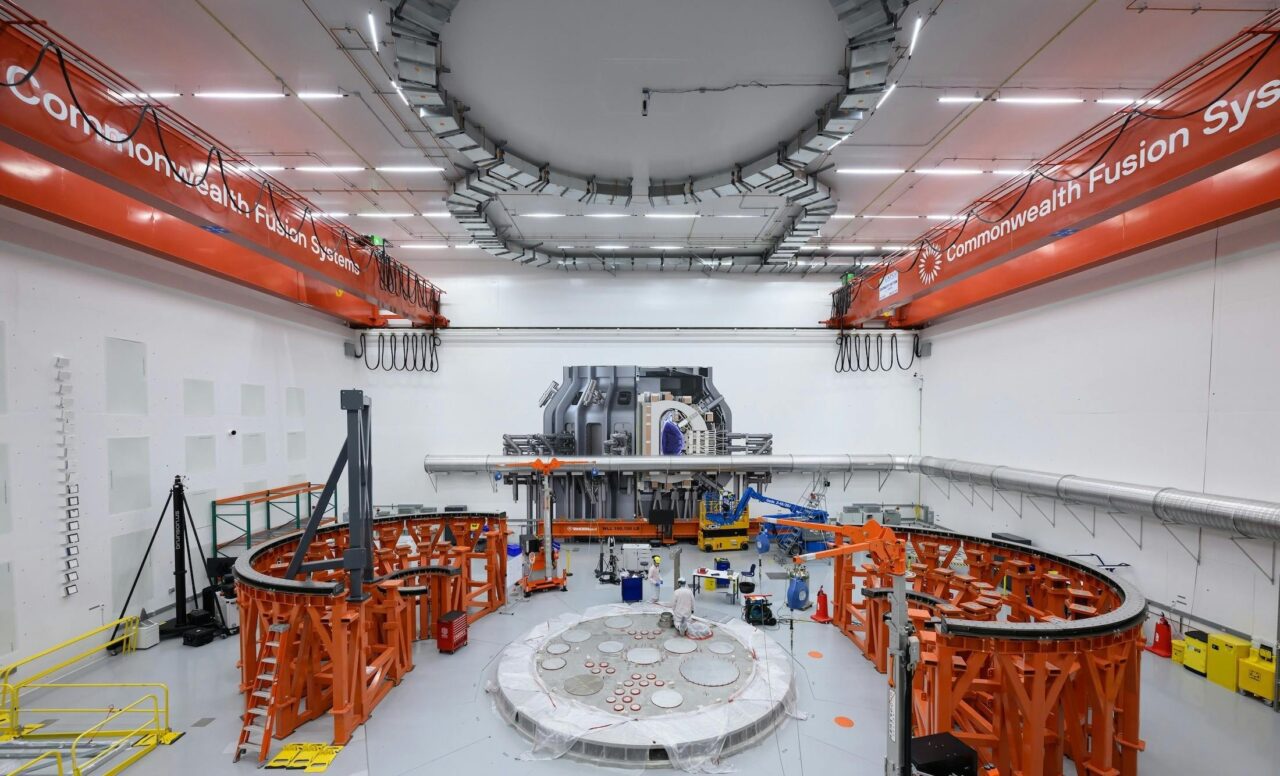
Tech giant Google has signed a power purchase agreement (PPA) with Commonwealth Fusion Systems (CFS) to buy at least 200 MW of energy from CFS’s planned fusion-based power plant in Chesterfield County, Virginia.
The deal announced June 30 is the latest among companies in the technology and artificial intelligence (AI) space to secure the power supply for hyperscale data centers. CFS has said it hopes to begin producing fusion energy at a commercial scale early in the next decade. It currently is building a demonstration plant, known as SPARC, in Massachusetts.
Michael Terrell, head of advanced energy at Google, said, “By entering into this agreement with CFS, we hope to help prove out and scale a promising pathway toward commercial fusion power. We’re excited to make this longer-term bet on a technology with transformative potential to meet the world’s future energy demand, and support CFS in their efforts to reach the scientific and engineering milestones needed to get there.”
Terrell at a June 27 media briefing prior to Monday’s announcement acknowledged the company is betting on the promise of fusion despite uncertainties about deployment. “Yes, there are some serious physics and engineering challenges that we still have to work through to make it commercially viable and scalable, but that’s something that we want to be investing in now to realize that future,” he said.
Latest Google Investment
Google has signed several PPAs with various energy groups to buy electricity for its global operations, including purchasing renewable energy since 2010. It also is buying power from battery energy storage and geothermal sites. The company recently committed to support three nuclear power projects with 600 MW of generation capacity, though this is the company’s first deal for fusion energy.
Google, which began funding CFS in 2021, also said it would increase its investment in CFS, and the deal also gives the company rights to take power from future CFS-built reactors. Terms were not disclosed.
Terrell in a blog post on Google’s website wrote: “Fusion holds huge potential as an energy source of the future: it’s clean, abundant and inherently safe, and it can be built just about anywhere. Commercializing fusion is immensely challenging, and success is not guaranteed. But if it works, it could change the world by providing a more secure and clean energy future.”
CFS Founded in 2018
Massachusetts-based CFS, a company spun out of the Massachusetts Institute of Technology (MIT), was founded in 2018. The company has raised more than $2 billion in funding.
Commonwealth CEO and co-founder Bob Mumgaard said the deal is the “largest offtake agreement for fusion.” He said Google’s investment would allow his company to continue with the research and development needed for the commercial fusion plant in Virginia, and support completion of the demonstration facility in Devens, Massachusetts.
“Fusion power is within our grasp thanks in part to forward-thinking partners like Google, a recognized technology pioneer across industries,” said Mumgaard. “Our strategic deal with Google is the first of many as we move to demonstrate fusion energy from SPARC and then bring our first power plant online. We aim to demonstrate fusion’s ability to provide reliable, abundant, clean energy at the scale needed to unlock economic growth and improve modern living—and enable what will be the largest market transition in history.
“It’s hard to say exactly how much it accelerates it, but it definitely puts it in a category where now we can start to work more and more on ARC [the Virginia plant] while we finish SPARC, instead of doing them very sequentially,” Mumgaard, who talked about company’s technology in this 2020 interview with POWER, said.
“In 2024, we achieved approximately 66% global average carbon-free energy across our data centers and offices,” Google wrote in a report released last week. The company as part of its investment in CFS is supporting development of a demonstration tokamak fusion reactor, a donut-shaped technology that uses large magnets and molten plasma to merge atoms and create energy.
Terrell said Google is “using this purchasing power that we have to send a demand signal to the market for fusion energy and hopefully move [the] technology forward.” Fusion produces no pollution, and the tokamak is said to generate 10 million times more energy than fossil fuels such as coal and natural gas. Unlike nuclear fission, the technology the powers today’s reactors, there is no radioactive waste from fusion.
The challenge for fusion is for researchers to get more energy out of a fusion reaction than it takes to create the reaction.
—Darrell Proctor is a senior editor for POWER.
